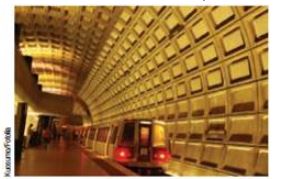Assignment:
The typical subway station in Washington, DC, has six turnstiles, each of which can be controlled by the station manager to be used for either entrance or exit control—but never for both. The manager must decide at different times of the day how many turnstiles to use for entering passengers and how many to use for exiting passengers. At the George Washington University (GWU) Station, passengers enter the station at a rate of about 84 per minute between the hours of 7 a.m. and 9 a.m. Passengers exiting trains at the stop reach the exit turnstile area at a rate of about 48 per minute during the same morning rush hours. Each turnstile can allow an average of 30 passengers per minute to enter or exit. Arrival and service times have been thought to follow Poisson and negative exponential distributions, respectively. Assume riders form a common queue at both entry and exit turnstile areas and proceed to the first empty turnstile.

The GWU station manager, Gerald Aase, does not want the average passenger at his station to have to wait in a turnstile line for more than 6 seconds, nor does he want more than 8 people in any queue at any average time.
a) How many turnstiles should be opened in each direction every morning?
b) Discuss the assumptions underlying the solution of this problem using queuing theory.
Provide complete and step by step solution for the question and show calculations and use formulas.